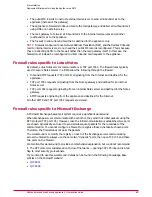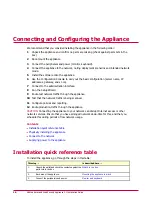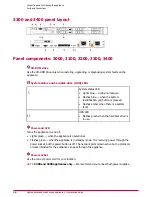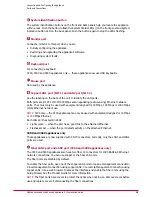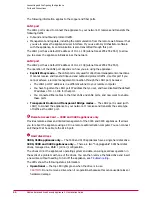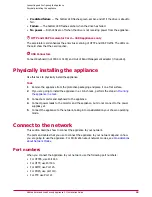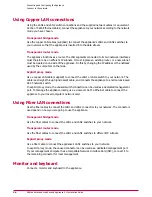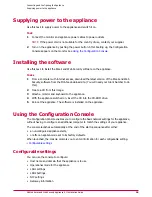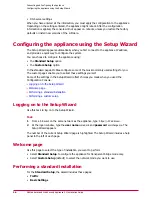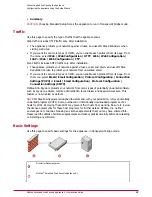
traffic is intercepted and scanned, therefore the appliance is said to operate as a transparent
bridge.
Figure 3: Transparent bridge mode
Transparent router mode
In transparent router mode, the appliance scans email traffic between two networks. The
appliance has one IP address for outgoing scanned traffic, and must have one IP address for
incoming traffic.
The communicating network devices are unaware of the intervention of the appliance — the
appliance’s operation is
transparent to the devices.
What the appliance does
In transparent router mode, the appliance connects to your networks using the LAN1 and LAN2
ports. The appliance scans the traffic it receives on one network, and forwards it to the next
network device on a different network. The appliance acts as a router, routing the traffic between
networks, based on the information held in its routing tables.
Configuration
Using transparent router mode, you do not need to explicitly reconfigure your network devices
to send traffic to the appliance. You need only configure the routing table for the appliance,
and modify some routing information for the network devices on either side of it (the devices
connected to its LAN1 and LAN2 ports). For example, you might need to make the appliance
your default gateway.
In transparent router mode, the appliance must join two networks. The appliance must be
positioned inside your organization, behind a firewall.
NOTE:
Transparent router mode does not support Multicast IP traffic or non-IP protocols, such
as NETBEUI and IPX.
Pre-installation
Considerations about Network Modes
McAfee Email and Web Security Appliance 5.1 Installation Guide
12

















